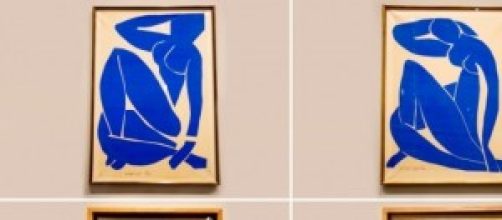HenryMatisse: The Cut-Outs has been described by director of the TateGalleries Nicholas Serota as a-once-in-a-lifetime show and oui, it really is. Bringingfor the first time together almost 130 art works, this exhibition deeply exploresthe last chapter of Matisse’s career.
Henry Matisse (1869-1954) is one of the most influential artistsof the twentieth century. What makes his oeuvre particularly fascinating is theway it embraces various techniques and elegantly moves from a concept toanother, from a subject to another. Yet always without losing his special andunique traits.
Diagnosed with cancer, Matisse spent the last seventeenyears of his life on a wheelchair. He could no longer paint. Despite healthproblems, this phase of his life corresponded instead to a new approach tomaking work, that of cutting shapes from painted paper.
“Itis no longer the brush that slips and slides over the canvas, it is the scissorthat cut into the paper and into the colour. The conditions of the journey are100 per cent different.The contour of the figure springs from the discovery ofthe scissors that give it the movement of circulating life. This tool doesn’tmodulate, it doesn’t brush on, but it incises in, underline this well, becausethe criteria of observation will be different”
The process behind this new “paint with scissors”technique is as simple as it appears: draw, cut, and stick.
Yet the compositionof lines, figures, and colours is extraordinary and remains with neither precedentnor parallel. By juxtaposing small gems such as Icarus and The Horse withmonumental works like The Snail and Oceania, the exhibition perfectly displaysthe development of the cut out method. In fact, as Matisse’s experience andskills with these paper cut outs increased, so did the scale of his works. Roomby room pieces become more ambitious and the show reaches its climax with thefamous quartet of Blue Nudes, made byMatisse at the age of 82.
Wandering in such vortex of colours and figures gives asense of fluidity and almost complete harmony which well mirrors Matisse’s joyin his new or rather “second life”.
The exhibition is vast and the experienceis somehow magical: truly, it’s a journey into Matisse’s creativity whichtranscends the boundaries of conventional drawing, painting and sculpture. Yes,it is a once-in-a- life time show and teaches us that, to borrow Matisse’swords, “creativity takes courage”.
HenryMatisse: The Cut-Outs is on view until September atTate Modern (London) and it will then travel to the Museum of Modern Art (NewYork).

